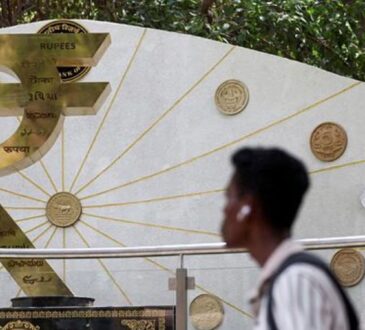View | India’s CBDC Journey: Lessons from global setbacks and why it still has the potential to succeed
If we apply the same logic and build CBDC into the existing financial ecosystem rather than competing with it to open new avenues where UPI can’t function or interoperably, the Digital Rupee (e₹) can succeed where others have failed. But this isn’t just about domestic payments—CBDCs could be India’s answer to seamless global transactions, reducing reliance on SWIFT and cutting remittance fees to near zero.
The Reserve Bank of India (RBI) has been playing it smart. Unlike some countries that rushed into CBDCs without a clear roadmap, India is testing and iterating. Here’s a quick timeline:
-
- In July 2021, RBI officially announced it was exploring a Digital Rupee.
- By February 2022, Finance Minister Nirmala Sitharaman confirmed that CBDC would be introduced in 2022-23.
- In November 2022, RBI launched the Wholesale CBDC (e₹-W) pilot with nine major banks to test interbank settlements, and by December 2022, the Retail CBDC (e₹-R) pilot kicked off, allowing select users to transact via Digital Rupee wallets from banks like SBI, ICICI, Yes Bank, and IDFC First Bank.
- By 2023, RBI expanded the pilot, onboarding more merchants, testing offline payments, and exploring smart contract-based transactions.
Looking ahead, 2024 and beyond should focus on cross-border payments, UPI integration, unlocking Web3 and wider merchant adoption. India isn’t rushing. It is building for scale.
Here’s the thing—most CBDCs haven’t worked as expected. Why? Because they were either forced on users, ignored existing payment habits, or lacked clear incentives. China poured billions into promoting e-CNY, but people still prefer Alipay and WeChat Pay.
If Indian CBDC doesn’t learn from it, it will be DOA (Dead on Arrival). Nigeria launched eNaira in 2021 but restricted cash withdrawals to push adoption. Instead of switching, people turned to underground markets. Today, less than 1% of Nigerians use eNaira. No one likes being forced. Instead, incentivise CBDC usage, don’t mandate it. The European Union’s Digital Euro has faced resistance due to concerns over financial surveillance and slow regulatory progress. People want privacy. RBI must ensure CBDC transactions do not feel like government surveillance.
But here’s why India’s CBDC can still win. First, UPI is already a success—CBDC just needs to fit in. UPI has already transformed India’s payments landscape, processing over $1.7 trillion in 2023 alone. The solution? CBDC should work within UPI, not as a separate system. If Digital Rupee is just another option on the same app people already use, adoption will happen naturally. It needs to unlock things like enabling Delivery vs Payment, traceability and programmable use cases, and places where UPI doesn’t function.
Second, CBDC can solve the remittance problem. India is the world’s largest recipient of remittances—over $111 billion in 2022. The problem? SWIFT is slow and expensive. Stablecoins like USDC and USDT have already disrupted remittances in places like Mexico and the Philippines. But because India has strict capital controls (FEMA regulations), stablecoins aren’t an option. The fix? CBDC-based remittances. A Digital Rupee linked with global CBDCs could make cross-border payments instant, cheap, and fully compliant.
Third, the role of private players & banks is key. A government-run CBDC is a bad idea if banks and fintechs don’t get involved. India is avoiding that mistake by letting banks distribute CBDC instead of replacing them, allowing businesses to integrate CBDC into payroll & trade finance, and working with fintechs to build smart contract-based payments. This ensures that CBDC adoption happens naturally without breaking the financial system.
And here’s the real game-changer—CBDC isn’t just about payments. It’s about programmable money. Imagine automated payroll payments where your salary gets deposited as CBDC, and your bills are automatically paid via smart contracts. Or instant cross-border trade settlements where exporters get paid in real-time instead of waiting weeks. Or subsidy disbursements with zero fraud—no middlemen, no leakage, just direct government transfers.
Companies like Cypher Labs are already working on integrating CBDCs into Web3, ensuring India leads in decentralised finance without breaking regulatory frameworks. But there are still challenges we need to solve. If everyone shifts to CBDC, banks might lose deposits, impacting lending. The solution? A hybrid system where banks hold a mix of deposits and CBDC. People don’t want the government watching their every move. The fix? Privacy-preserving CBDC models, like those being tested in Europe. Just like UPI, CBDC will need merchant incentives to ensure businesses actually use it. Fix these, and India’s CBDC becomes unstoppable.
India already leads the world with UPI—there’s no reason it can’t do the same with CBDC. CBDC + Web3 rails can revolutionise global payments—but only if done right. India needs to act fast before global stablecoins dominate cross-border finance. If the Digital Rupee is built right, it won’t just be another CBDC—it’ll be the future of decentralised global finance.
—The author, Aishwary Gupta, is Global Head of Payments at Polygon Labs. The views are personal.




